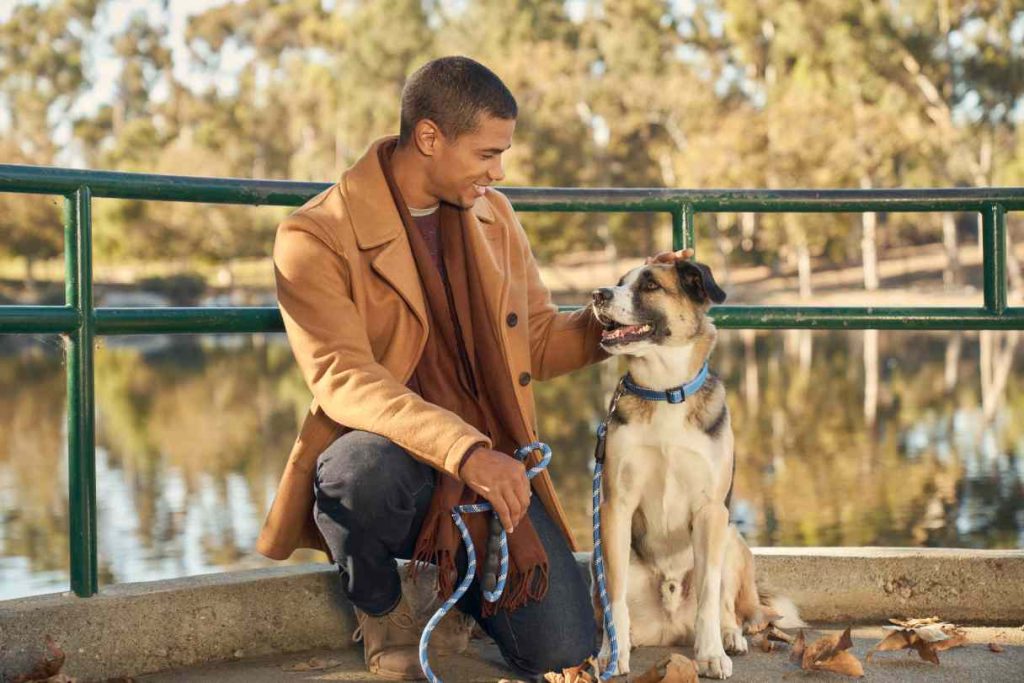The Influence of Positive Training on Pet Behavior

Understanding Positive Training Methods
In the realm of pet ownership, the approach to training can significantly affect the bond between animals and their humans. Positive training is a popular method that emphasizes rewards over punishment, fostering a nurturing environment. This technique not only shapes behavior but also influences the overall well-being of pets, creating a harmonious household where both pets and owners thrive. By understanding the core principles of positive training, pet owners can cultivate a lasting relationship built on trust and mutual respect.
Key Benefits of Positive Training
- Enhances trust: Positive training methods help build a safe and loving relationship. When pets associate training with positive experiences, they develop confidence in their owners, leading to a stronger bond. For instance, a dog that receives consistent praise for following commands will be more likely to approach its owner willingly, seeking engagement.
- Encourages learning: Positive reinforcement stimulates mental engagement and cognitive skills. For example, dogs and cats trained using positive methods often learn commands more quickly than those subjected to negative reinforcement. This is because animals are motivated to engage when they understand that their actions will lead to a reward.
- Reduces anxiety: Positive training lowers stress levels, creating a calm environment. An anxious pet is more likely to exhibit undesirable behaviors, such as barking or scratching. Conversely, when pets are trained positively, they feel more secure, reducing their anxiety and making them more manageable companions.
Research shows that pets trained with positive methods are often more obedient and exhibit fewer behavioral issues. Furthermore, traditional training methods, which often rely on punishment, can lead to fear and aggression. This is particularly concerning as a fearful pet can be unpredictable. In contrast, positive approaches lead to improved communication between owners and their pets, ensuring a more enjoyable and fulfilling companionship.
Examples of Positive Training Techniques
- Clicker training: This technique uses a distinct sound to mark good behavior. The sound created by the clicker indicates to the pet that their action was correct, followed by a reward. For example, if a dog sits on command, the owner clicks and immediately gives a treat, reinforcing the desired behavior.
- Treat rewards: Encouraging desirable actions with treats makes training engaging. This method can be as simple as giving a dog a small piece of kibble when they successfully complete a command. It is effective because it creates a positive association with obedience, motivating pets to repeat the behavior.
- Praise and affection: Reinforcing good behavior through verbal affirmation and physical affection is essential. A simple “good boy!” or a gentle pet reinforces bonding and encourages pets to continue behaving well. For many pets, the presence of their owner’s affection can be as motivating as food rewards.
Exploring the impact of these methods reveals transformative results for both pets and their owners. Not only do pets learn effectively, but the overall atmosphere of training sessions becomes more enjoyable and rewarding. As the conversation around animal training evolves, the influence of positive training remains a crucial topic for pet enthusiasts in the United States. For those looking to enhance their connection with their furry companions, embracing these methods might just be the key to fostering a lifetime of joy and understanding.
DISCOVER MORE: Click here to learn how pets benefit child development
The Transformational Power of Positive Training
As pet owners navigate the challenges of training, the influence of positive training methods becomes increasingly evident. By focusing on reinforcement rather than punishment, these techniques set the stage for improved pet behavior and a healthier human-animal bond. Ensuring a clear understanding of the principles behind positive training can lead pet owners to unlock the full potential of their furry companions.

Strengthening the Human-Pet Bond
One of the most significant benefits of positive training is the enhancement of the bond between an owner and their pet. This training method fosters an environment of trust and support, where pets feel safe to express themselves. Studies reveal that pets trained using positive methods demonstrate lower levels of aggression and fear, suggesting that a secure emotional connection is established. For example, when a dog learns to associate commands with pleasure and reward, its willingness to obey increases. This bond translates into everyday life, where pets actively seek out interaction and companionship from their owners.
Positive Training Techniques That Yield Results
Understanding the various techniques associated with positive training can help pet owners effectively implement them into daily routines. Here are some successful strategies favored by trainers and pet owners alike:
- Target Training: This method entails using a target stick or your hand to guide the pet into desired positions. As the pet learns to touch the target, it receives a reward, reinforcing the behavior. This technique is particularly effective for teaching more complex tricks and commands.
- Shaping Behavior: Rather than waiting for the perfect action, this technique rewards successive approximations. For example, if training a dog to roll over, a trainer might initially reward the dog for lying down, then for rolling onto its side, gradually increasing the criteria for rewards. This process allows pets to learn complex behaviors at their own pace.
- Timeout from Negative Situations: Instead of using punishment, positive training encourages owners to remove pets from situations that prompt undesirable behaviors. By redirecting a pet’s focus to a more positive activity or environment, owners can effectively manage and correct behaviors without fear or anxiety.
These techniques not only encourage desired behaviors but also create a learning environment where pets feel empowered and engaged. The advantages of positive training stretch beyond the training sessions, instilling discipline and obedience in pets that translate to everyday scenarios. As incidents of misbehavior decrease, pet owners often find themselves enjoying a deeper, more fulfilling companionship with their pets.
Incorporating positive training into routines paves the way for better communication, reduced stress for both pet and owner, and an overall greater enjoyment of each other’s company. As conversations surrounding pet training continue to evolve, the influence of positive methods remains an imperative aspect for pet enthusiasts across the United States. Embracing the transformative nature of these techniques may significantly enhance the relationship with our beloved companions.
The role of positive training in enhancing pet behavior cannot be overstated. Animals, much like humans, respond better to encouragement rather than punishment. This method creates a trusting bond between the pet and owner, fostering an environment where learning flourishes. The essence of positive reinforcement is not just about rewarding good behavior; it cultivates an atmosphere ripe for communication and understanding.
Through consistency and patience, owners can witness a remarkable change in their pets. For instance, dogs trained using positive methods tend to exhibit reduced anxiety levels and improved social skills. This method leads to a more harmonious relationship with both humans and other animals. Moreover, positive training techniques have shown promise in bridging behavioral gaps in pets who may have experienced neglect or previous negative training methods. Emphasizing positive experiences can significantly improve an animal’s confidence and cognitive function.
It’s also worth noting that positive training isn’t just beneficial during the initial stages of a pet’s life. It can be applied effectively at any age, forever transforming the dynamics between pets and their owners. As the understanding of animal behavior continues to evolve, more pet owners are discovering the value of implementing positive training techniques as a lifelong strategy.
| Advantages | Key Features |
|---|---|
| Stronger Bond | Creates trust and security, enhancing the relationship. |
| Effective Learning | Encourages adaptability and responsiveness in various environments. |
In conclusion, positive training methods contribute significantly to improving pet conduct, making it a vital part of pet ownership. The benefits, from improved behavior to a deeper connection, illustrate the profound impact of this training approach. Through understanding and empathy, pet owners can lead their companions towards a more fulfilling and well-behaved life.
DISCOVER MORE: Click here to learn about balanced pet nutrition
Long-Term Effects of Positive Training on Well-Being
Beyond immediate behavior modifications, the long-term effects of positive training on pet well-being cannot be overstated. By instilling a mindset of curiosity and adaptability, positive training promotes mental stimulation and emotional health, leading to happier and more well-adjusted pets. This holistic approach addresses both physical and psychological needs, enabling pets to thrive in a diverse range of environments.
Reducing Behavioral Issues
Many pets face behavioral challenges that can stem from fear, anxiety, or a lack of understanding of their environment. Various studies indicate that positive training techniques effectively address these issues. For instance, dogs that undergo positive reinforcement training show significant reductions in common behavioral problems such as barking, digging, and chewing. According to the American Society for the Prevention of Cruelty to Animals (ASPCA), using positive techniques not only decreases instances of these behaviors but also enhances overall obedience by establishing a clear communication system rooted in trust.
Evidence from Professionals and Research
Veterinary experts and professional trainers increasingly endorse positive reinforcement methods as capable of fostering adaptability among pets. Research published in the Journal of Veterinary Behavior highlights a clear link between positive training methods and improved responses to social stimuli. For example, dogs trained with positive reinforcement displayed lower stress levels during social interactions with other dogs and humans. This reduction in stress translates to healthier pet behavior, encouraging better adaptability to new situations, environments, and even new people.
Cognitive Benefits and Lifelong Learning
Positive training does not merely focus on immediate behavior; it also has far-reaching implications for cognitive development. Engaging in training exercises through positive reinforcement stimulates pets both mentally and emotionally, fostering lifelong learning habits. For example, engaging a pet in regular training sessions can develop their cognitive skills and problem-solving abilities. A study conducted by the University of Pennsylvania indicates that dogs trained through positive methods exhibited improved learning capabilities and better decision-making skills, leading to enhanced overall performance in various tasks.
The Ripple Effect on Pet Owners
Interestingly, the benefits of positive training extend beyond the pets themselves; owners also experience positive changes in their interactions with their furry companions. As owners implement positive training methods, they often learn valuable skills in patience, empathy, and communication. These traits cultivate a more enriching relationship that significantly contributes to a supportive home environment. Moreover, positive training inspires pet owners to become more actively engaged in their pets’ lives, often leading to increased activity levels and shared experiences between owners and their pets. The shared journey of training fosters deeper relationships, with many pet owners noting that they feel more connected and tuned into their pets’ emotional needs.
- Behavioral Adaptability: Pets learn to respond positively to varying situations, adapting their behavior without the fear of punishment.
- Stronger Human-Pet Relationships: The bonds forged through this method resonate well into the everyday interactions, reinforcing positive behaviors.
- Empowered Pets: By instilling confidence through reward-based training, pets become more self-assured and eager to participate in new activities.
As the conversation around pet behavior continues to evolve, the spotlight on positive training methods should remain prominent. The ripple effects of positive reinforcement offer compelling insights into the mutual benefits experienced by both pets and their owners, paving the way for a fulfilling coexistence rooted in understanding and respect.
DISCOVER MORE: Click here to dive deeper
Conclusion
In summary, the benefits of positive training on pet behavior extend far beyond simple obedience. As evidenced by a growing body of research, these methods enhance not only behavioral responses but also foster a deeper emotional bond between pets and their owners. By prioritizing techniques that emphasize reward and understanding, pets are nurtured into more adaptable and emotionally secure companions. The profound impacts on mental stimulation, learning capabilities, and stress reduction underscore the holistic benefits that come with such training practices.
The chain reaction of positivity flows through the household, as engaged pet owners become equipped with skills that promote patience and empathy. This shared journey not only positively influences the pet’s behavior but significantly enriches the owner-pet relationship, creating a camaraderie built on trust and communication. Such elements are crucial in constructing a nurturing home environment, which ultimately translates into happier, healthier pets.
As we look to the future of pet training, the choice of positive reinforcement methods presents compelling evidence that aligns with both contemporary ethical standards and practical effectiveness. For pet owners seeking to cultivate a more harmonious relationship with their animals, embracing positive training isn’t just an option—it’s an investment in a better quality of life for both parties. As you consider the training approaches for your furry friends, remember that each positive interaction empowers a bond that will thrive for years to come, allowing pets to flourish as well-rounded members of the family.


